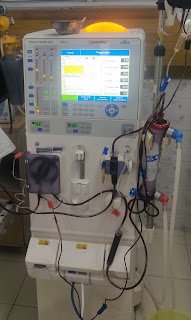1801006105 LONG CASE
This is an online e log book to discuss our patient de-identified health data shared after taking his / her / guardians signed informed consent. Here we discuss our individual patients problems through series of inputs from available global online community of experts with an aim to solve those patients clinical problem with collective current best evident based input.
This E blog also reflects my patient centered online learning portfolio and your valuable inputs on the comment box is welcome.
I have been given this case to solve in an attempt to understand the topic of " patient clinical data analysis" to develop my competency in reading and comprehending clinical data including history, clinical findings, investigations and come up with diagnosis and treatment plan.
A 28 year old male resident of nalgonda a daily wage worker came to OPD with chief complaints of
Abdominal distention since 15 days
Shortness of breath since 10 days .
Yellowish discoloration of eyes since 15 days.
Bilateral leg swelling since 15 days.
HISTORY OF PRESENTING ILLNESS
Patient was apparently asymptomatic 15 days back then he developed abdominal distention which is insidious in onset and gradually progressive since 15 days that increased on consuming food decreased on passing stools.
The patient also complains of shortness of breath grade 3 since 10 days
Patient has loss of appetite since 2 days due to abdominal tightness.
No history of pain abdomen
No history of chest pain , cough, cold
No history of orthopnoea, paroxysmal nocturnal dyspnoea.
No history of melena , haematemesis.
No history of epigastric and retrosternal burning sensation
No history of facial puffiness, burning micturition, decreased urine output. No history of confusion, drowsiness.
PAST HISTORY
He had similar complaints in the past 5 months back , he developed fever ,yellowish discoloration of eyes for 3 days , fever was high grade continuous not associated with chills and rigor , no evening rise of temperature. he went to hospital , used medication for 1week.
Symptoms subsided after a week following which he resumed alcohol consumption (180 ml) daily since then .
Not a known case of diabetes,hypertension,asthma,TB,CAD.
PERSONAL HISTORY
Diet : Mixed
Appetite : Decreased
Sleep : normal
Bowel and Bladder: Constipation is seen.
Addictions - patient consumes alcohol 180ml per day since 5 years.
FAMILY HISTORY:
No similar complaints in the family.
GENERAL PHYSICAL EXAMINATION:
Patient is conscious ,coherent and cooperative and well oriented to time, place and person.
moderately built and nourished.
Pallor-absent
Icterus-present
Cyanosis-absent
Clubbing-absent
Generalised Lymphadenopathy-absent
Edema-bilateral pedal edema present.
VITALS:
Temperature - 98.2*c
PR :- 95bpm
RR : 22cpm
BP :- 130/80mm Hg
SPO2 :- 98%
GRBS :- 120mg/dl.
SYSTEMIC EXAMINATION
Per abdomen -
Inspection-
Abdomen is distended , flanks are full, umbilicus is slit like , skin is stretched , dilated veins present , no visible peristalsis , equal symmetrical movements in all quadrant’s with respiration
Palpation -
No local rise of temperature, no tenderness
All inspectory findings are confirmed by palpation, no rebound tenderness, gaurding and rigidity.
No tenderness , No organomegaly
Percussion -
Fluid thrill present
Auscultation-
Bowel sounds heard
CVS :
Inspection-
Chest is symmetrical , no dilated veins , scars and sinuses seen
Palpation -
Apical impulse felt at left 5th inter coastal space medial to mid clavicular line
Auscultation- S1 , S2 heard , no murmurs
RESPIRATORY SYSTEM:
Inspection-
Chest is symmetrical, trachea is central
Palpation -
Trachea is central ,
Bilateral chest movements are equal
Percussion - resonant in all 9 areas
Auscultation-
Normal vesicular breath sounds heard .
CENTRAL NERVOUS SYSTEM:
Higher mental functions - normal memory intact
cranial nerves :Normal
sensory examination:
Normal sensations felt in all dermatomes
motor examination-
Normal tone in upper and lower limb
Normal power in upper and lower limb
Normal gait
reflexes-
Normal reflexes elicited- biceps, triceps, knee and ankle reflexes elicited
cerebellar function-
Normal function.
INVESTIGATIONS :
Hemogram -
Hb- 13.2gm/dl
Total leucocyte count - 5000cells /cumm
Neutrophils - 71%
Lymphocytes -22%
RBC - 4.8 million /cumm
Electrolytes-
Sodium- 138mEq/l
Potassium - 4.4mEq/l
Chloride- 104mEq/l
Liver function tests -
Total bilirubin - 4.75mg/dl
Direct bilirubin - 2.11mg/dl
SGOT(AST) - 178 IU/L
SGPT(ALT) - 50 IU/L
ALP- 255IU/L
Total protein - 6.2 gm /dl
Albumin - 2.01 gm/dl
A:G ratio - 0.48
Ascitic tap -
Appearance - clear , straw coloured
SAAG - 1.79 g/dl
Serum albumin - 2.01 g/dl
Asctic albumin - 0.22 g/dl
Ascitic fluid sugar - 166mg/dl
Ascitic fluid protein - 2.1 g/dl
Ascitic fluid amylase - 20.8 IU /L
LDH : 150IU/L
Cell count- 150 cells
Lymphocytes 90%
Neutrophils 10%
PT - 15 seconds
INR - 1.4
aPTT - prolonged
CUE:
Appearance - clear
Albumin - trace
Sugars - nil
Pus cells - 2to 4
Epithelial cells - 1 to 3
RBC - nil
RFT :
Blood urea - 20mg/dl
Creatinine - 0.9mg/dl
X-ray
USG :
Impression- liver normal size
Altered echotexture with surface irregularities present suggestive of chronic liver disease.
DIAGNOSIS
Ascites secondary to chronic liver disease.
TREATMENT PLAN:
1. Fluid restriction
2. Salt restricted normal diet
3. Inj.VITAMIN K 1 ampoule in 100 ml NS OD
4. Inj.THIAMINE 1amp in 100ml NS OD
5. Inj.PAN 40mg BD
6.Inj.ZOFER 4mgTID.
7.Syrup LACTULOSE 15ml 30 mins before food TID.
8. Tab. Aldactone 50mg OD
9. Tab. LASIX 40mg BD.










Comments
Post a Comment